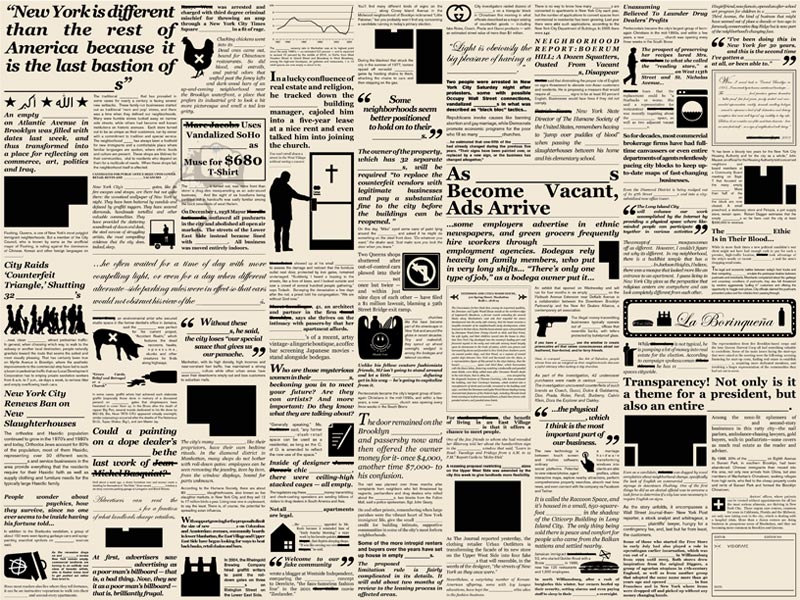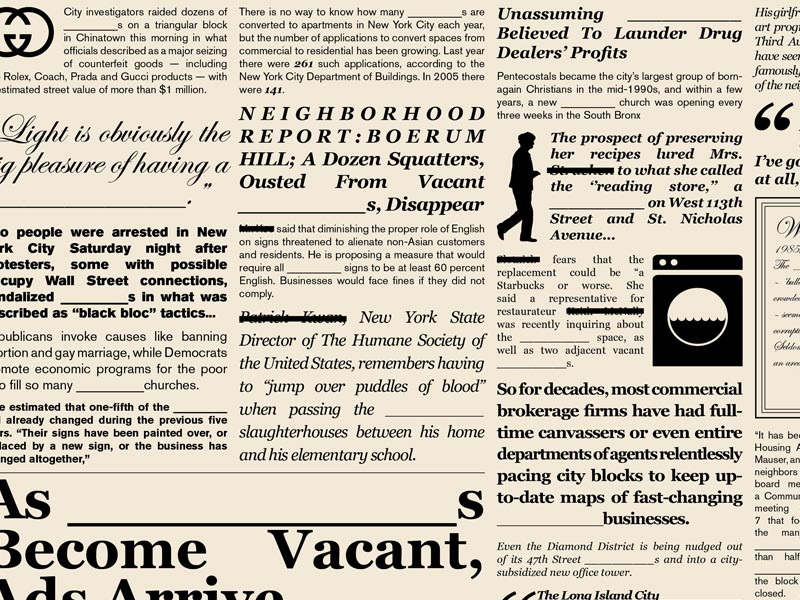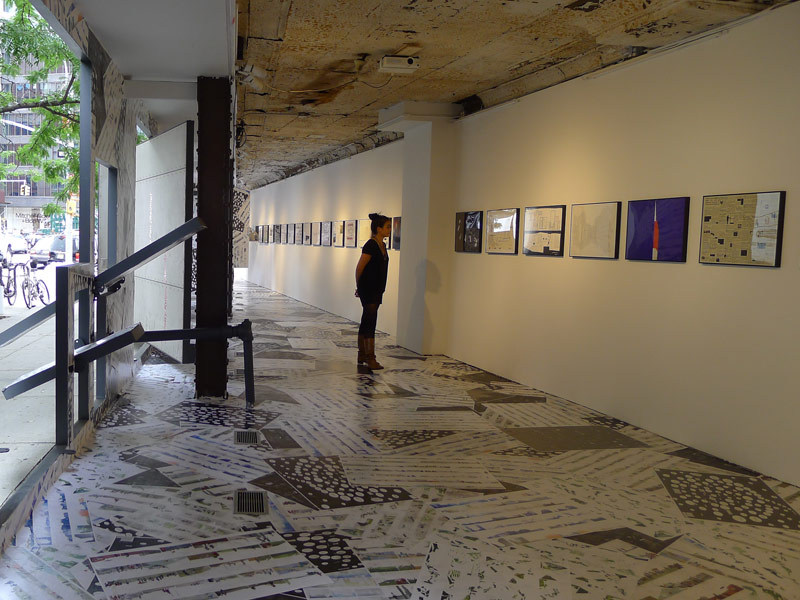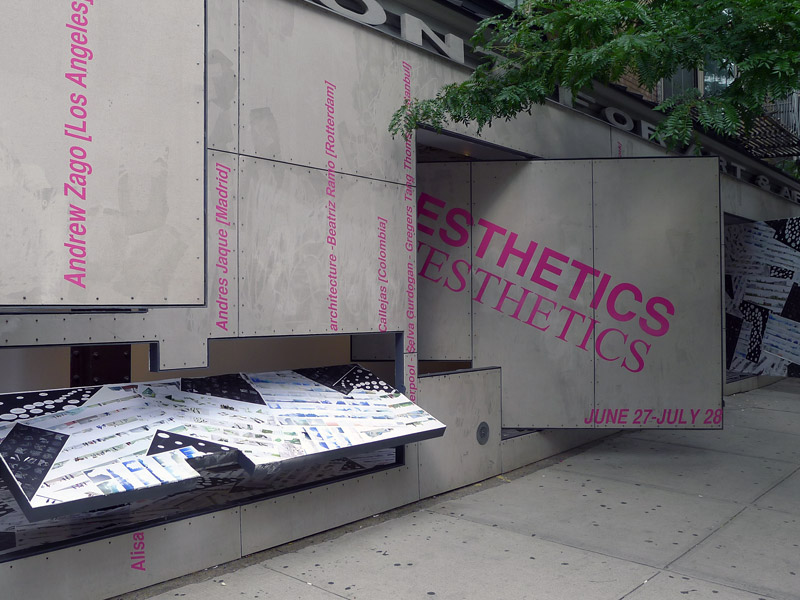VisionArc was recently featured in a group exhibition entitled Aesthetics / Anesthetics at Storefront for Art and Architecture in New York City. The exhibition included a diverse group of other designers and practitioners in the field(s), all departing from the question below with a nod to a vital institution to contemporary design discourse.
(Text from Storefront for Art and Architecture)
What is it that an architectural drawing does and how does it do it? How can we distill beauty from cosmetics? How can new modes of representation produce new architectures and new sensibilities?
Aesthetics/Anesthetics is an exhibition about architectural drawings.
Aesthetics/Anesthetics invites audiences to reflect on the performing properties of architectural drawings, their purpose and aesthetic qualities, encouraging the architectural community and other creatives to push drawings, and with it architecture, beyond inherited acknowledged values. An image [and its after-image] carries within itself a history [or performative script] of characters, discourses, and conventions. During the last ten years there has been a resurgence of certain representational devices that have become architectural clichés operating almost as placeholders or decorative elements of an architecture unable to draw itself. We all have seen them: birds on beautiful skies, happy children with balloons, those axonometries… this exhibition is an invitation to let those clichés go and explore the performativity of the architectural drawing as a way to generate a new imaginary. The 30 drawings on display are an open door to reclaim a lost territory: the drawing.
The centerpiece of the exhibition is a collection of 30 newly commissioned architectural drawings. Each drawing depicts the Storefront Gallery space at 97 Kenmare, from the perspectives of a diverse group of emerging and established architects worldwide. The drawings reveal a different aspect of the space and are representative of the generative properties of the architect’s drawing. The gallery space, wallpapered with sourced images of birds, axonometries, children, green and comics cut from drawings produced in the past five years, reflects on the specific graphic devices used by architects to ignite certain feelings and properties in their drawings that the architectural drawing itself is unable to convey: skies filled with birds to portray movement, axonometries as a mode of applied intellectuality, children as life generators, green surfaces as magic ecological surfaces, or comics as prosthetic communicative devices.
Storefront for Art and Architecture is first and foremost a center for the exchange of ideas, agendas, challenges, confrontations; it is a part of a larger infrastructure for dialogue about the role of art and design in the city and beyond. At the same time, one might argue that all storefront’s in the city possess that kind of cultural, economic and political power. They are often the nodes that localize the exchanges and interactions between individuals and communities, expose and facilitate patterns of behavior, commerce, and many of the frictions (and fictions?) of our day-to-day lives in the city. A storefront might be a place to practice religion or slaughter a chicken; a conduit for illicit trade or creative destruction. Storefronts are both wallpaper and newspaper.
VisionArc’s contribution to the Storefront exhibition sought to communicate this complexity and this vibrancy by subsuming the presence of the gallery proper (and it’s always recognizable movable facade panels) into the larger matrix of associations, events, spectacles, and mysteries emanating from this 1-story landscape. The news clippings, headlines, and stories are all culled from New York City’s circulars and tabloids and are each presented as snapshots of a moment where a storefront became a stage. In so doing we are giving a nod to the contribution of Storefront makes to the critical and creative landscape of New York City while paying equal tribute to the (sometimes unexpected) role that our less rarefied storefronts play in the ever evolving shape of the curious life of our city.



